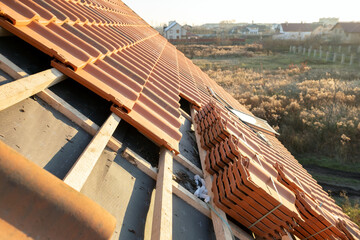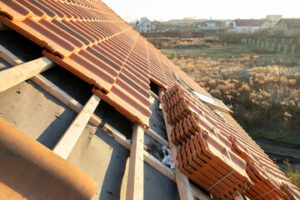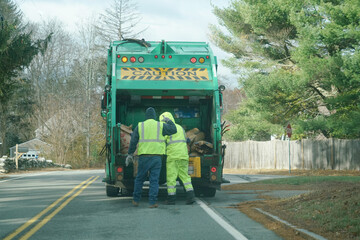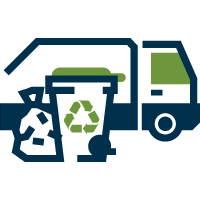Insulation removal is an important home repair task that has several benefits for homeowners. Whether your insulation is old or damaged, replacing it can boost your home’s energy efficiency and improve indoor air quality.
Before beginning insulation removal, make sure to turn off or disconnect any live wires in the attic. This will prevent electrical fires and ensure safety during the process. Visit Our Website to learn more.
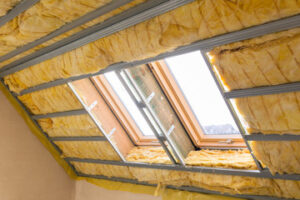 Improved Energy Efficiency
Improved Energy Efficiency
Insulation is crucial for regulating temperature and ensuring a comfortable living environment. However, insulation can lose its effectiveness over time due to moisture damage or pest infestation. If your insulation is damaged, it may be a good idea to get rid of it and replace it. A qualified professional can help you determine whether or not your attic needs new insulation, which type is best suited for your home, and how much it will cost.
Upgrading your attic insulation can improve your home’s energy efficiency and result in noticeable savings on your energy bills. This will also have a positive impact on the environment, helping to reduce carbon emissions and other harmful pollutants.
Old or damaged insulation can be a breeding ground for rodents and pests, which will affect the quality of your home’s air and increase maintenance costs. Replacing your insulation can eliminate this problem and ensure a healthy, safe living space for you and your family.
If you’re doing a renovation, such as a kitchen remodel, you may need to remove old insulation in the attic. This can be a complex process that requires specialized equipment, but it’s worth the effort to ensure your new renovation is done correctly and efficiently.
Insulation companies can provide insulation removal services that will save you both money and time. Using high-powered industrial grade vacuums, we can quickly and safely remove your existing insulation without disrupting your living spaces. This will leave your attic ready to be re-insulated with the appropriate amount of loose-fill or roll insulation to maximize your home’s energy efficiency. Whether you need to upgrade your home’s insulation or simply repair damaged insulation, we have the experience and expertise to ensure it is done right.
Increased Home Value
One of the simplest ways to improve your home’s value is by installing energy-efficient appliances and upgrading your insulation. Replacing old or damaged insulation can significantly boost your home’s energy efficiency, which in turn leads to lower utility bills. Consequently, your home’s resale value will increase.
Whether it’s due to pest infestation, mold, or simply because of age, insulation that is infested with contaminants will not perform well at all. In addition, the contaminants can affect air quality in your home. In most cases, the contaminants that compromise the lifespan of your insulation include rodent droppings and urine, mildew, insect nesting material, and bird and bat droppings.
The first step is a comprehensive inspection by a professional, assessing the insulation type and condition. This is a critical process that ensures the safety of everyone in your home. It will also determine the best tools and removal methods for your unique situation.
Homeowners should prepare for insulation removal by clearing all pathways to the attic. They should also place plastic sheeting over walls and floors, securing it with masking tape to prevent the spread of debris and dust. They should also relocate furniture and valuables away from access areas and cover them with drop cloths. They should also shut off HVAC systems and seal vents to minimize air pollution.
Blown-in insulation can be a messy project to remove. However, qualified professionals use a method known as “lift and blow,” which allows them to lift each piece of insulation without having to touch it. This reduces the time it takes to complete the job and minimizes the dust in your home.
Reduced Energy Bills
Insulation is a critical component of your home’s energy efficiency, but over time it degrades. Old insulation is often ineffective and can cause drafts and higher energy bills. Insulation removal allows for the replacement of a more effective, energy-efficient insulating material that can help lower your heating and cooling costs significantly.
In addition to its insulating benefits, new insulation can help seal air leaks and maintain HVAC system health. This will help reduce your home’s environmental impact, as well as extend the life of your system.
Whether your attic insulation is old or just needs to be replaced, it’s a good idea to have the work done professionally by a qualified and experienced company. This helps to ensure the job is completed correctly and protects your home against mold and pests, which can be caused by improper removal or disposal of old insulation.
If you choose to do the work yourself, be sure to take steps to protect your home from dust and other debris. Clear a path to the attic access and cover walls and floors along that route with plastic sheeting. Use a mask and protective gear to avoid inhaling harmful materials. Be sure to turn off and seal vents during the process.
Once old insulation is removed, an expert can install new insulation right away. This will improve your home’s insulating abilities immediately and prevent further degradation over time. This will also increase your home’s resale value and make it more attractive to potential buyers. Request a professional energy audit today to see if insulation removal and replacement is a wise investment for your home!
Improved Indoor Air Quality
When it comes to your home, the quality of the air you breathe is just as important as anything else. Indoor pollutants, such as mold, mildew, toxins from chemical-based cleaning products, pet dander, and dust can have negative effects on health. These airborne contaminants can increase the risk of respiratory issues, heart disease, and other conditions.
Insulation removal is a great way to improve your indoor air quality. Depending on the circumstances, removing old insulation can prevent mold growth, air leaks, and other problems that contribute to poor indoor air quality. For example, attic insulation can become contaminated with rodent droppings and urine. When this happens, the material can become ineffective and promote the spread of diseases such as rabies and herpes B. Additionally, if there is evidence of pests living in your attic, the proper steps need to be taken to eliminate them before any insulation can be installed.
Other reasons for removing insulation include water damage, which can saturate the material and cause it to lose its insulating properties. In addition, the presence of animal droppings and nests can lead to contamination. In these cases, it is best to have a professional sanitize the attic and make sure all exits and entries used by animals are closed off before any new insulation can be installed.
Having the right insulation for your home is essential to a healthy lifestyle. Good attic insulation will reduce energy costs, improve comfort, and protect your home from moisture and pests. The best options today are smarter, greener, and more efficient than ever before. With new options such as aerogel insulation and the natural cork material Thermacork, you can feel good about insulating your home while improving your quality of life.
Reduced Asbestos Exposure
Insulation that is damaged or deteriorating can expose you and your family to potentially harmful particles, including fiberglass and asbestos, depending on the type of insulation you have in your home. By having your old insulation removed and installing new, you eliminate the source of those particles, keeping your home clean and healthy for everyone.
In addition, many attics and crawlspaces contain rodent feces, urine, nesting materials, and bird and bat droppings, all of which can be very dangerous to touch, and can spread disease in people. These contaminants can also contaminate new insulation, making it less effective at keeping your home warm and dry.
It is important to hire a professional when it comes to insulation removal because these professionals are trained and equipped with the proper tools for handling contaminated and hazardous materials. In addition, they have access to specialized equipment that makes the job much quicker and easier than trying to do it yourself.
Asbestos is a naturally occurring mineral that is used in older insulation products, which poses a health risk to homeowners and workers. While asbestos use has declined significantly in the United States due to federal regulation, it is still present in older homes and buildings. While vermiculite insulation does not typically contain asbestos, it is always best to err on the side of caution and have any old insulation tested for asbestos before attempting to remove or replace it.
Before the actual process begins, it is important to protect the rest of your home with plastic sheeting and clear pathways to prevent debris from spreading in other parts of your home. In addition, it is a good idea to turn off HVAC systems and seal vents before starting. Finally, it is important to wear appropriate safety gear, including face masks and rubber gloves to avoid breathing in any contaminants.
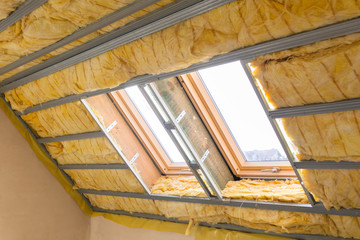
:max_bytes(150000):strip_icc()/GettyImages-1337506217-62b58dfa4a314213a7fd7bb8fb9aae79.jpg)



